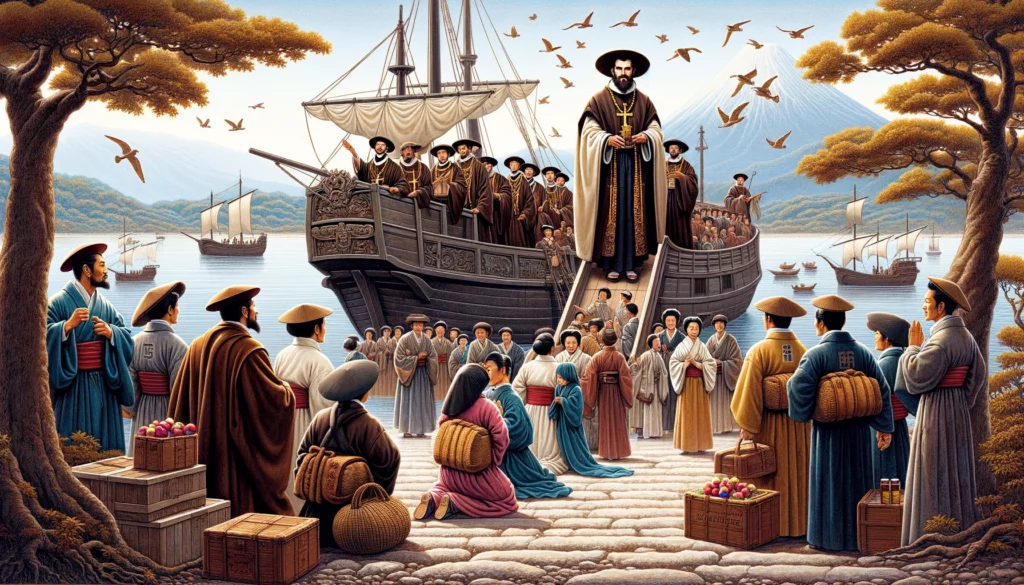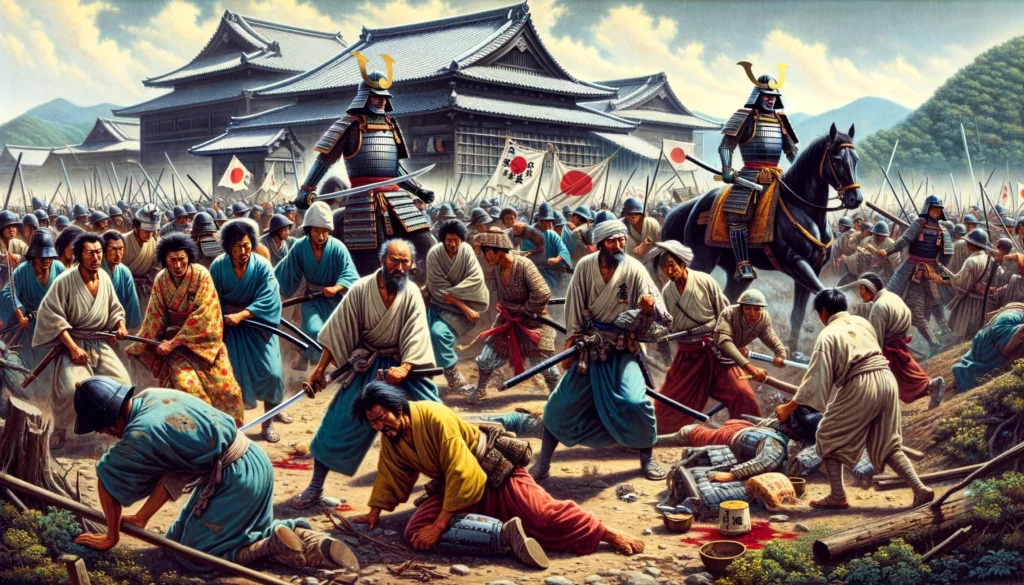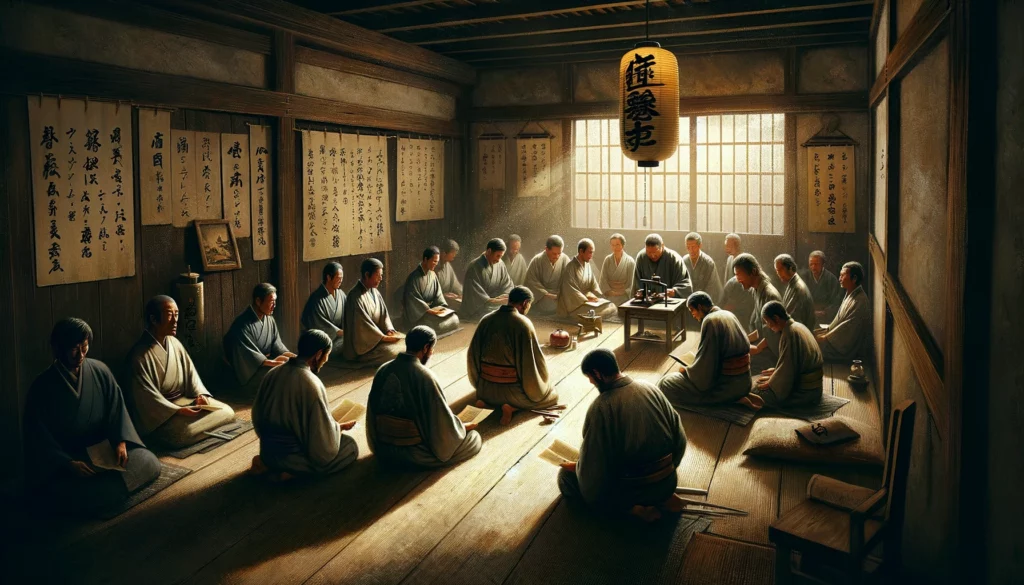Imagine a time when Japan, known for its rich cultural tapestry and deep-rooted traditions, faced an unexpected challenge. This challenge was not a foreign invader or a natural disaster, but a clash of beliefs, culminating in a fierce persecution of Christians.
This tale is not a work of fiction but a critical piece of history during the Shogunate period in Japan. It’s a story that reveals much about power, fear, and the struggle for control. But why did the Shogunate, a powerful military government, feel threatened by a religious minority? What led to this intense crackdown? Stay with us as we unravel a forgotten chapter of Japanese history, one that holds lessons for the modern world about tolerance, fear of the unknown, and the complexities of cultural integration.
The Significance: Understanding the Impact

Before delving into the “why,” it’s crucial to grasp the significance of this event. The Shogunate’s actions against Christians were not just a footnote in history; they reflected a broader conflict between traditional Japanese values and the influx of foreign ideas.
This period of persecution profoundly affected Japan’s religious landscape, shaping its policies and international relations for centuries. It’s a story that resonates even today, reminding us of the delicate balance between cultural preservation and openness to new ideas. By understanding this historical event, we gain insight into the broader themes of cultural clash, the fear of change, and the consequences of intolerance.
The Reasons: Exploring the “Why”
- Clash of Beliefs: The introduction of Christianity in Japan, initially by Jesuit missionaries in 1549, presented a stark contrast to the indigenous Shinto and Buddhist beliefs. The Shogunate viewed this new religion, with its monotheistic tenets and disregard for traditional Japanese gods, as a threat to the established religious order.
- Political Threat: Beyond the religious clash, Christianity posed a political challenge. Converts to Christianity, including some influential daimyo (feudal lords), were seen as potential allies to foreign powers, particularly European nations. This fear was not unfounded, as European countries at the time often used religion as a tool for colonial expansion.
- Control and Unity: The Shogunate, particularly under Tokugawa Ieyasu, sought to unify Japan and consolidate power. The growing number of Christians, with their allegiance to a foreign religious authority (the Pope), was seen as a threat to this unity. The Shogunate’s response was to assert control by eliminating what it saw as a source of division.
- Incidents of Rebellion: Several uprisings, most notably the Shimabara Rebellion (1637-1638), which was led predominantly by Christian peasants, further fueled the Shogunate’s fears. These rebellions were seen not just as peasant uprisings but as insurrections influenced by foreign Christian powers.
- Cultural Preservation: There was also a desire to preserve Japanese culture against foreign influence. Christianity, with its European origins, was viewed as an alien element that could erode the traditional Japanese way of life.
- Economic Reasons: Trade with Europeans brought not only Christianity but also firearms and other goods that could disrupt the social and economic order. Limiting Christianity was, in part, a move to control trade and maintain economic stability.
- International Relations: The period also saw Japan becoming increasingly aware of the geopolitical situation. The colonization of nearby countries by European powers made the Shogunate cautious about allowing a foreign religion to take root.

The Aftermath: Long-Term Effects of the Persecution
The Shogunate’s relentless persecution of Christians left an indelible mark on Japan’s history and its relations with the outside world. By the early 17th century, Christianity was driven underground, a state that persisted for over two centuries. This period, known as the Kakure Kirishitan era, saw hidden Christians practicing their faith in secrecy, often blending it with Buddhist and Shinto elements to avoid detection.
- Cultural Isolation: The persecution of Christians was part of a larger policy of sakoku, or national seclusion. Japan closed its doors to the outside world, only maintaining limited trade with select countries. This isolation had profound implications for Japan, both culturally and technologically, as it remained largely cut off from global developments for over two centuries.
- Internal Surveillance and Control: The need to monitor and suppress Christianity led to the development of a rigorous system of surveillance and control within Japan. This system extended beyond religious matters, affecting various aspects of life and contributing to the stability and longevity of the Tokugawa Shogunate.
- Religious Syncretism: The hidden Christians, or Kakure Kirishitans, developed a unique form of religious syncretism. This blending of Christian, Buddhist, and Shinto beliefs is a fascinating aspect of Japanese religious history and a testament to the resilience of faith under persecution.
- Opening to the West: The end of the Shogunate and the subsequent Meiji Restoration in the 19th century opened Japan to the West. Christianity, once suppressed, re-emerged, but the centuries of persecution had left a legacy of suspicion and ambivalence towards the religion.
- Modern-Day Japan: Today, Christianity is a minority religion in Japan, with a complex legacy. The history of persecution has contributed to a broader narrative about religious tolerance, minority rights, and the challenges of cultural integration in a predominantly homogenous society.

This exploration into the reasons and aftermath of the Shogunate’s persecution of Christians in Japan reveals a story of conflict, survival, and transformation. It’s a narrative that extends beyond religion, offering insights into the human capacity for both intolerance and resilience. As we reflect on this chapter of history, we are reminded of the enduring impact of cultural clashes and the ongoing challenge of balancing tradition with openness to the new.